Question Number 1
Please provide 3 strategies in which you will work with the School Board and School Police Chief to combat increasing acts of misconduct by students and teachers in our schools and school events. This includes gun violence, fights, and inappropriate contact with students and/or teachers.
Addressing misconduct by students and teachers requires a collaborative and strategic effort involving all stakeholders. Positively impacting the current trends begins by understanding the issues and establishing clear expectations, on-going education/professional development, and measures of accountability.
This relationship between the Board, Police Chief, and Superintendent is critical for strategic implementation as the system will need appropriate policy, funding, and execution. Fundamental to implementation are district and school leaders. As a unit, we must engage with students, teachers, unions, parents, and community leaders. We must utilize town halls, community dialogues, and other community engagement strategies to draw their voice into the process. We must analyze incident data and regularly review information on student and employee misconduct. Combined with the information from our community engagement process, data will assist in identifying patterns and trends to support our development of expectations, educational themes, and accountability measures.
While gathering stakeholder voice and information is vital component, we must concurrently plan and identify our specific expectations for the members of our school community. With stakeholder input, we must set high expectations that will establish the model of personal, professional, and disciplined organizational conduct. Discipline is linked to self-control and not situational. It is the capacity to regulate your behavior, actions, and habits. Discipline involves the concept of intentional choice and is rooted in integrity, honesty, and respect. Therefore, the expectation of being disciplined is vital to setting the expectations for all employees and students.
Any initiative of this nature is second order change and just having expectations is not sufficient. The intentionality of instruction and professional development will be critical to a successful foundation and the ongoing implementation of expectations for employees and students. As leaders we must actively support and champion the desired cultural changes. We must serve as cultural creators by demonstrating the behaviors we desire to see in the organization. We must be the example of our expectations. We must also help our employees, students and families know and understand those expectations. We need to assist them in realizing their role and how it contributes to both their personal and organizational goals. To support this transformational change, all stakeholders will need clear, written expectations and policies. They will need regular and on-going education and training surrounding expectations, behavior, discipline, compliance, and consequences.
All of this will not be enough without accountability. As leaders we must be accountable for measurable outcomes. It is not enough to have expectations; we must inspect what we expect, regularly and often. We must operationalize success though legal, measurable metrics and be transparent about progress. We must recognize and support positive behaviors aligned to our expectations. We must also address misconduct promptly and consistently, documenting incidents and ensuring alignment with district procedures. When fully realized, the outcome will be a safer school environment and community for all and a culture that practices self-regulation and holds each other accountable. (480)
Question Number 2
The Duval County Public Schools' annual budget exceeds two billion dollars. Please describe the work experiences you have had that show your ability to manage a budget of this size. Additionally, please describe your approach to budget forecasts, i.e., factors to be considered, appropriate timelines, etc.
My entire career I have worked in organizations with budgets that ranged from $2.1 billion to $5.3 billion. As superintendent, I am ultimately responsible to deliver a balanced budget, accounting for estimated revenue, expenditures, and reserves while concurrently monitoring revenue and expenditures to produce the actual budget and financial reporting for the closing of each fiscal year.
A simplified explanation of the budget process begins in the Fall with budget forecasting. This financial planning process estimates future revenue and expenses based on historical data and other relevant factors. To forecast, you need to collect historical data, predict revenue streams, estimate expenditures, consider assumptions and possible scenarios, and build a timeframe and budget cycle. At the same time, legislative priorities and lobbying strategies are developed to support the legislative session. By February/March numbers start to finalize and we begin to understand the application of the FEFP formula to our student population. Ongoing and regular presentations of progress are provided to the board. As the forecast becomes more accurate, a draft budget is developed and reviewed with the board. School budgets begin development. Bargaining authority for compensation should be discussed. In April, scheduled dates are set for the Tentative Budget Hearing in July and a Final Hearing and approval in September.
Creating a successful budget is a balance of competing expenditures and a focus on three critical areas: Student Achievement and Operations, Compensation, and Reserves. I often refer to this as a three-legged stool. Balancing these three legs is critical for positive educational outcomes, sustainable financial health, and stability. When these areas are in harmony, districts can provide a strong foundation for student learning and growth, employee compensation, and be prepared for the unknown.
Student Achievement and Operations: This focus ensures students and staff have the materials they need to support learning. It prioritizes the execution of the strategic plan and seeks operational efficiencies to support learning and achievement. (i.e. New Site Based School Budget, School Proximity Plan)
Compensation: This focus ensures competitive total compensation structures for all employees. It prioritizes employees and the school district’s competitive position in the educational marketplace. (i.e. Beginning Teacher Salary = $50,000, Absorbing Medical Insurance Inflation, 8% Increase to All Employees)
Reserves: This area ensures that in time of need, the district will have the dollars necessary to move forward and cover unexpected expenses. Reserves safeguard the district by providing operating capital in time of need. (i.e. $ 270 million dollars of damage from Hurricane Ian, 2023 Unassigned Fund Balance Percentage = 14.5%)
Additionally, monthly monitoring of the budget includes examination of revenues, expenditures, and impact on student achievement. Revenue streams (i.e. FTE), must be monitored like all sources to ensure the school district is securing the predicted funding. Effective oversight also requires that expenditures are kept in check and aligned to educational priorities. The monitoring of all budget revenue, expenditures, and variances allows for early intervention and correction. (483)
Question Number 3
Given significant declines in student enrollment in recent years and escalating construction costs, our district is facing school closures to address district budget shortfalls and will also need to revise the “15 Year Facility Plan” funded by our half penny referendum. If selected as our new superintendent, what steps would you take to bring our current district budget into alignment and prioritize projects within the 15-year facility plan? Additionally, how would you incorporate community feedback into your decision-making process?
Community engagement and involvement in decisions of this size and significance are critical to any level of success for a school district and superintendent. Without engaging the community and stakeholders, you surprise people, and no one likes this kind of surprise. While we were not closing schools, my work with student assignment, school budgets, school board re-districting, and Lee County’s Proximity Plan are all examples of successful community/stakeholder involvement surrounding critical and important issues. Each of these situations was unique and required specific actions, but the principles of the process are the same and outlined below.
Strategically realigning an existing budget or facility plan to cover potential shortfalls requires thoughtful planning, communication, and effective decision-making. Reprioritizing someone else’s plan involves reflective consideration and collaboration. Below are principles I have utilized in leading to my organizations to successful outcomes:
Assess the Plan (Existing Budget and 15 Year Plan): Review the current budget or plan thoroughly to ensure understanding of its priorities and goals. Evaluate to determine if current allocations and plans align with the district’s mission, values, and strategic outcomes. Identify any dependencies and critical deadlines.
Assess the Context: Consider factors such as decreasing student enrollment, population shifts, class size, organizational goals, district history, and resource/revenue availability. Develop a clear understanding of why the budget and plan need adjustment.
Identify Priorities: Prioritize student needs, academic programs, and essential services. Determine the most critical areas that need funding or facilities that must be renovated or constructed.
Analyze For Trade-Offs: Be honest and transparent; not all is possible, and everything cannot be accomplished. Review and determine if there is overlap between the budget and the referendum language that can be utilized to an advantage. Establish if categorical funds may be utilized before impacting the general fund. Weigh trade-offs and potential decisions for both the intended and unintended consequences.
Engage Stakeholders: Communicate with the people who created the plan you are reprioritizing and those impacted by your decisions. Seek input on budget priorities and potential changes. Dialogue to gather their perspective and input and share your perceptions. Involve the board, teachers, staff, parents, and community members in regular cadence of meetings and updates.
Explore Cost-Saving Measures: Determine and consider efficiencies, such as shared services, energy conservation, and transportation requests vs. requirements. Evaluate contracts and vendor agreements for cost-effectiveness.
Propose All Changes Respectfully: Present the rationale for reprioritization with openness to feedback and adjustment based on the other’s perspectives. Make it known and acceptable to revisit priorities.
Focus on Equity and Fairness: Ensure and demonstrate that changes consider the needs of all stakeholders.
Communicate Transparently: Be open about budget challenges, changes and potential shortfalls during each step. Be ready to explain the rationale behind all decisions to build trust.
Declining enrollment, choice options, ESSER funding and the facility plan will require a shift for DCPS. As leaders, the process to positively impact the trajectory of the school system regarding financial conditions begins by understanding the issues, engaging stakeholders, and establishing a collaborative path forward. (499)
Video Submissions
Videos cannot exceed 13 minutes total (approximately 3 minutes per question). Candidates could submit one video with all answers or videos, one per question, or any combination desired.
How will you approach the integration of innovative schooling models and emerging technologies like OpenAI and ChatGPT to enhance in Duval, and what strategies do you envision to adapt to the changing educational landscape while ensuring equitable access for all students?
Describe a time you recognized a systematic problem within an organization. What was it and how did you create scalable systems and reorganize the department to improve the flawed process?
What is your detailed plan to eliminate all D and F graded schools?
Florida is wide open for school choice. What are you going to do to lead DCPS to compete for students?
